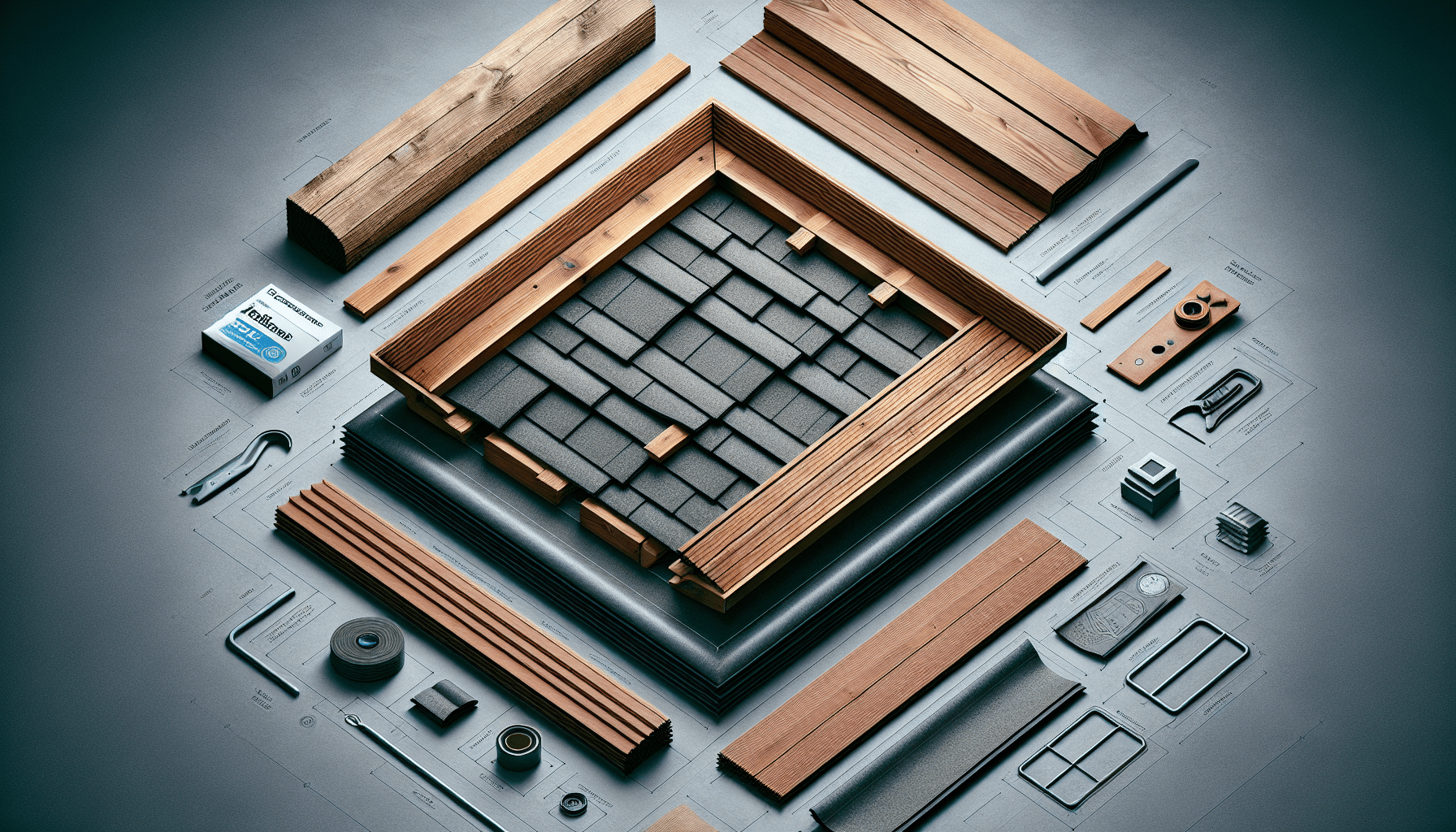
Are you looking to make sure your shed stays water tight for years to come?
A recent discussion has highlighted the benefits of using tanalised wooden battens instead of nailing shed roofing felt directly. The modern roofing felts now seal around clout nails to prevent leaks, making wooden battens a recommended choice for water tightness.
While there are concerns about toxic chemicals in tanalised timber, it is suggested to use good quality mineral faced felt or torch-on felt for a longer lasting shed roof. For those looking for alternatives, heavy duty polythene sheet or DPM can also be used.
Personal experiences and suggestions on alternative materials are shared to help you make the best choice for the longevity and durability of your shed roof.
Considering Shed Roofing Felt or Wooden Battens: Which Option is Best for Water Tightness?
When it comes to roofing sheds, one common debate is whether to simply nail down shed roofing felt or to use wooden battens. This decision can greatly impact the water tightness and durability of your shed roof. Before making a choice, it’s important to consider all factors involved in both options. Here, we will discuss the use of tanalised wooden battens and how they are recommended for ensuring water tightness in shed roofing.
Why Tanalised Wooden Battens are Recommended for Water Tightness
Tanalised wooden battens are the preferred choice for ensuring water tightness in shed roofing. The tanalising process involves treating the wood with preservatives to protect it from decay, fungi, and insects. This treatment significantly prolongs the lifespan of the wooden battens, making them a durable option for shed roofing. Additionally, tanalised wooden battens provide a solid base for roofing materials to be securely attached, ensuring a tight seal against water infiltration.
Modern Roofing Felts and Their Sealant Properties
Modern roofing felts now come with added features that enhance their water tightness. These felts are designed to seal around clout nails, preventing any water leakage through the puncture points. This improvement in technology makes roofing felts an effective choice for shedding roofing. When paired with tanalised wooden battens, the combination provides a robust defense against water ingress and ensures the longevity of your shed roof.
Warning about Toxic Chemicals in Tanalised Timber
While tanalised wooden battens are excellent for water tightness, it is crucial to be aware of the potential risks associated with the treatment chemicals. The preservatives used in tanalising can contain toxic chemicals that may pose health hazards if not handled properly. When working with tanalised timber, always wear appropriate protective gear such as gloves and masks to prevent direct contact with the chemicals. It’s important to prioritize safety while benefiting from the durability of tanalised wooden battens.
Using Quality Mineral Faced Felt for Long-Lasting Shed Roofs
For those looking for an alternative to tanalised wooden battens, opting for high-quality mineral faced felt can also ensure a long-lasting shed roof. This type of felt is designed to withstand harsh weather conditions and provide superior water resistance. By investing in a good quality mineral faced felt, you can enhance the durability of your shed roof and minimize the risk of water damage over time.
Consider Torch-On Felt for Enhanced Durability
If you are seeking a more durable roofing material for your shed, torch-on felt is an excellent choice. Torch-on felt is made from modified bitumen that is melted onto the roof surface, creating a seamless and watertight barrier. This method of installation eliminates the need for nails or wooden battens, further reducing the risk of water infiltration. While torch-on felt may require professional installation, its durability and longevity make it a worthwhile investment for a shed roof that lasts.
Heavy Duty Polythene Sheet or DPM as an Alternative to Roofing Felt
In some cases, heavy-duty polythene sheet or a damp-proof membrane (DPM) can be used as an alternative to traditional roofing felts. These materials provide a strong barrier against water penetration and are more cost-effective compared to roofing felts. However, it’s important to ensure proper installation and sealing of the edges to prevent any water seepage. While heavy-duty polythene sheet or DPM may not offer the same aesthetic appeal as roofing felts, they can be a practical solution for shed roofing in certain situations.
Personal Experiences with Shed Roofing Materials
Personal experiences with shed roofing materials can offer valuable insights into the durability and effectiveness of different options. Many shed owners have shared their experiences with using tanalised wooden battens, roofing felts, torch-on felt, and other materials for shed roofing. By learning from these experiences, you can gain a better understanding of the pros and cons of each material and make an informed decision for your own shed roof.
Suggestions for Longevity and Durability of Shed Roofing
When it comes to ensuring the longevity and durability of shed roofing, there are several key factors to consider. Choosing the right materials, such as tanalised wooden battens or high-quality roofing felts, can significantly impact the lifespan of your shed roof. Regular maintenance and inspections are also crucial to identify any issues early on and prevent water damage. By following best practices and using quality materials, you can create a shed roof that withstands the test of time and remains water tight for years to come.
In conclusion, the use of tanalised wooden battens is highly recommended for ensuring water tightness in shed roofing. Paired with modern roofing felts or alternative materials, such as torch-on felt or heavy-duty polythene sheet, you can create a durable and long-lasting shed roof that effectively protects your belongings from the elements. By making informed choices and prioritizing safety, you can enjoy a water-tight shed roof that stands strong in the face of all weather conditions.
Read Discussion on whether to nail shed roofing felt or use wooden battens
